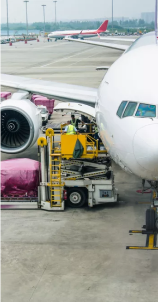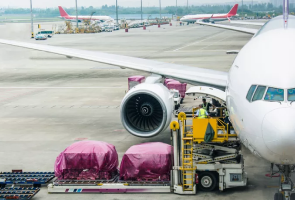
Ready4Trade
Central Asia
A web app customized for the delivery of export management coaching
missions that contributes to the development of intra-regional
and international trade in Central Asia.

The digital manual is a web-application developed by Mad Devs under the Ready4Trade-Central Asia project, which is a project funded by the European Union and implemented by the International Trade Center (ITC) in the Central Asian region.
The goal of the partnership was to improve the implementation of the Export Management Coaching Initiative (EMCI), a programme where expert coaches in the field of export management train the owners of local small and medium-sized enterprises (SMEs) on how to best optimise business processes and expand trade capacity.

The web application improved reporting and coordination by giving the coaches a convenient tool to collect, process, and report data.
Project mission
ITC previously implemented EMCI in Sri Lanka and Afghanistan to facilitate export management for SMEs in these countries via business-related training on the ground. The project’s current goal is to support the development of intra-regional and international trade in five Central Asian (CA) countries: Kazakhstan, Kyrgyzstan, Tajikistan, Turkmenistan, and Uzbekistan.

It is the trade component of a larger EU-funded programme that aims to support investment, competitiveness, and trade in Central Asia, thus contributing to sustainable and inclusive economic development in the region.
To boost intra-regional and international trade, ITC trains Export Management Coaches (EMCs), who then deliver on-the-job coaching to offer practical and action-oriented advisory services to local businesses.
Coaching focuses on five thematic areas
Export planning and pro forma invoicing


Mandatory certifications, registrations and buyer standards


International shipping by sea and air freight


Customs and duties
Packaging and labelling
For more information on the R4TCA project, please visit site
It is the first time that EMCI is running in five countries simultaneously. The growth of the project means more people involved, more activities to coordinate, and more ambitious objectives to pursue.
ITC’s aims under this programme
40
SMEs will receive coaching services in each of the five countries
50
SMEs out of the total that the project will cover will be women-led enterprises
200
enterprises will receive coaching services overall
Challenges
The main challenge for ITC was to coordinate missions and formalise recommendations provided by the coaches. Initially, the project was using a paper-based manual mission report to track their activities with SMEs. R4TCA implementers saw digitalisation as a major opportunity for improvement.
Below are examples of issues that digitising the manual resolved:

Extensive use of paper (minimum 2 reams of paper per SME)

Challenges with manually tracking coaching mission statuses, outputs, and outcomes

Lack of readily available mission critical information

ITC had to manually calculate any mission statistics

Coaching reports presented challenges with storing, extracting, compiling, and using data derived from coaching

Challenges of information accessibility to the Institutional Partners in each country, the ITC, EU, and other stakeholders
How our product solves the challenges

Saving efforts: Better reporting and coordination
The web application we developed is now ITC’s reliable tool for coordinating EMCI. Both SMEs and coaches track their activities in electronic form, generating valuable data that is analysed and disseminated quickly and conveniently. ITC can monitor mission progress. Planning and implementing the project and missions became significantly easier and faster.
Saving paper: Fully paperless and eco-friendly alternative
Going paperless is an internationally recognised way to make your operations greener and more sustainable. The digital tool is a long-term solution that can help prevent the extensive use of paper in future projects, too.
We at ITC could benefit from digital transformation. The paper-based manual was 200 pages long, and the coach needed to fill out two copies of it every time. Developing a web app to deal with it was a solution that had lots of pluses and not a single minus.
~400 reams or 200,000 sheets of paper
the alternative costs of running a paper-based version of the R4TCA EMCI component
Saving time
Instead of filling out hundreds of pages of the paper-based manual, R4TCA coaches can focus on the aspects of their work that truly add value to stakeholders, i.e. coaching and collaborating with SMEs. Running a digital manual is also more convenient to report progress and derive automatic statistics.
I had concerns that coaches would find it difficult to deal with a digital instrument and that they would be reluctant to switch to it. However, the web app is so user-friendly and intuitive that the coaches got the hang of it easily.
To help the coaches get the hang of the web application, we also prepared a user manual to guide users through the application’s functionality. The guide features screenshots from the digital manual to make learning easier.
Collecting data for analysis
The real challenge with paper-based documentation that includes hundreds of Initial Approach Questionnaires was not only related to the time it took to draft it. It was also about what happened to the data collected. There were no plans to digitise the inputs. Technically, all the reports would eventually sit in the NPM's offices and collect dust.
Instead, a unified regional data collection platform made adding, storing, processing, and sharing data possible, convenient, and accessible for subsequent analysis.

Platform developed locally
The R4TCA project is funded by the EU, with the overarching goal of facilitating economic development in the Central Asian region. Therefore, choosing Mad Devs, a development team whose developers are located in the region was all but natural. With that, ITC contributed to the growing innovative, export-oriented software development sector.
Sustainability
Sustainability is one of the key paradigms of the R4TCA project. Digital transformation efforts initiated by the ITC have greatly contributed to sustainability through innovative efforts by Mad Devs in a twofold format.
The initial sustainability round transpires into the minimum estimated savings of paper alone amounted to at least 80 boxes or 400 reams of paper. This perfectly aligns with the EU sustainability and environmental protection goals.
However, the sustainability wave does not dissipate with the above. The augmented and customized versions of the digital platform would enhance and contribute to sustainability in the subsequent global initiatives, too.

We consider the development of this digital manual to be not an expense, but an investment. The automation of reporting means that the project can be replicated and that its mission is easier to achieve.
Developing the innovation
Mad Devs onboarded the development team and produced the minimum viable product (MVP) of the EMCI manual in record time.
The MVP featured entity profiles, key elements of the workflow engagement history, and planning functionality. The application also enables users to manage SMEs’ profiles (fill out questionnaires and collect feedback), create coaching mission intervention reports, and plan and track coaching missions (by importing CSV files).
The MVP is scalable, meaning that further adjustments and enhancements can be made and the existing system will handle them. We planned for scalability when developing the app’s architecture and infrastructure. We wanted the application to be user-friendly and perform flawlessly, so we worked on more than the basic functionality.
- Built a data backup system with daily backups
- Set up a CI/CD pipeline
- Introduced a staging environment in addition to the production environment
- Introduced an infrastructure monitoring system
- Covered with integration and unit tests
- Created a user manual with screenshots from the app and with descriptions of its functions in Russian, which all the coaches speak
The web application works on PC, Mac, iOS, and Android, so the coaches can use it on any device. We also added a multilingual user interface and made the app adaptable for various countries.
Functionality
We created three user categories for the application (Coaches, Institutional Partners [IPs], and ITC Admins). Users are also grouped by country, and access to features was customised by user group. Coaches can create new country-specific SMEs and search among existing ones. The coaches’ and IPs’ profiles are searchable, and the app tracks engagement history, reports mission progress, and calculates statistics.
Infrastructure
We set up a CI/CD pipeline to update new features/bug fixes on the fly. We also added a staging environment to test updates before deployment. The monitoring system we put in place allows continuously checking the infrastructure’s performance and configuring relevant alerts.

Our approaches
In development, we relied on Domain-Driven Design (DDD) values and the Command Query Responsibility Segregation (CQRS) principle. CQRS is an approach that involves separating read and command operations, thus creating a better architecture and improving the observability of the entire system.
Benefits of CQRS
Benefits of Domain-driven design
Domain-driven design helps the team create a common model. The teams from the customer’s side and from the developers’ side can then use this model to communicate the requirements. A domain model is modular and encapsulated, enabling the system to be changed and improved regularly and continuously.
Requirements are always explained from the domain perspective. Conceptualising the software system in terms of the business domain reduces the risk of misunderstandings between the domain experts and the development team.
A system built with DDD and CQRS is robust and more transparent. If you are using DDD, it takes less time for developers and the customer to communicate, to understand how the system functions and what new requirements there are, and to start working with the system.

Technology stack
Angular
RxJs
Material Design
.NET Core
ASP.NET
GitLab CI/CD
Docker
AWS
EKS
PostgreSQL
Sentry
Grafana
Meet the team

Kirill Zinchenko
Project Manager

Oleg Glazyrin
Full-Stack Developer

Andrew Gubskii
Full-Stack Developer

Dmitrii Khalezin
DevOps Engineer
Future plans
ITC and Mad Devs are hoping for further cooperation, and when the time comes, we are planning to add the following functionality to the digital manual:
- Travel requests: create them; add details; display their lists, statuses, and workflow; and send email notifications
- Travel calendar and travel request reports
- Editable captions for initial approach questionnaires (IAQs) and post-mission questionnaires (PMQs)
- With certain localisation efforts, the app will be fit for similar trade facilitation initiatives in more countries in the future
Mad Devs and ITC partnership
The collaboration between Mad Devs and ITC was mutually enjoyable. Our team was happy to contribute to ITC’s mission, and our partners appreciated Mad Dev’s professionalism.
The views and opinions expressed here are those of the authors and of Mad Devs and do not necessarily reflect the official policy or position of either the International Trade Centre or the European Union. Any content provided by the authors is of their opinion only.
We appreciate that the team took time to listen to us and to understand our needs. We also liked the professional approach: weekly reports helped us a lot to keep track of progress. We hope we’ll work together again in the future.

